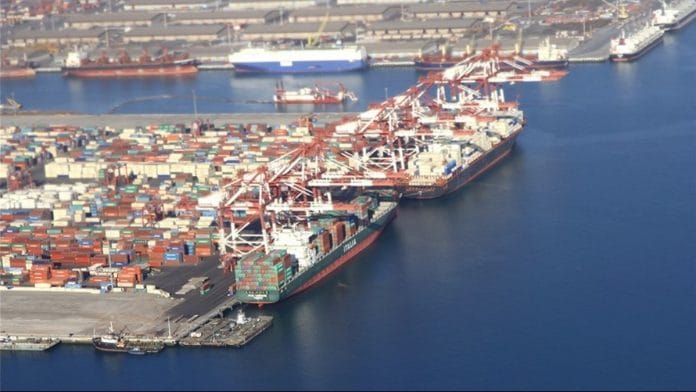New Delhi: Chabahar port, located in the south of Iran’s Sistan-Baluchistan province is operating normally as of now but further escalation in tensions between Iran and Israel could adversely hit the ongoing work by India Ports Global Limited (IPGL) to expand the port’s capacity, shipping ministry officials told ThePrint.
A state entity under the Union shipping ministry, IPGL signed a 10-year long term contract with Iran’s Port and Maritime Organization in May 2024 to develop the Chabahar port.
IPGL currently manages and operates the Shahid Beheshti terminal at Chabahar. Besides signing the long-term agreement, India also offered a credit window of $250 million for developing infrastructure around the deep-sea port.
Earlier, India had entered into a short-term agreement with Iran for running the Shahid Beheshti terminal, which had to be renewed every year. As part of the long-term agreement, IPGL had started work to expand the port’s capacity from the current 50,000 TEU’s (twenty-foot equivalent unit) to 5 lakh TEUs. TEU is a standard unit of measurement and refers to a shipping container that is 20 foot long, 8 foot wide and 8 foot tall. One TEU is equal to one 20-foot shipping container.
“If the conflict continues, the expansion work will further slow down,” a senior shipping ministry official, who wished to not be named, told ThePrint. “Sourcing of raw material and manpower will get difficult. Even now, because of the US sanctions, the pace of work is slow. This will have a bearing on completion timelines.”
Sunil Mukundan, IPGL Managing Director said to ThePrint, “The Chabahar port is fully operational currently. There has been no disruption there.”
Currently, there are three ships berthed side by side at Chabahar port, the ministry official quoted earlier said.
The Chabahar Port, located some 90 km from the China sponsored Gwadar port in Pakistan, is of huge strategic significance as it is located at the crossroads of South Asia, Central Asia and the West Asia (or Middle-East).
Its importance for India cannot be underscored as it allows India to bypass Pakistan and get access to markets in Afghanistan and Central Asia.
The port provides direct access to the Arabian Sea and beyond and facilitates efficient connectivity to markets in Asia, Europe and Africa. It is also located closer to ports on India’s west coast including Kandla and the upcoming Vadhavan port, once it becomes operational.
Iran is also working to connect Chabahar port to its rail network at Zahedan. Once ready, goods would be transported to Zahedan from Chabahar and from there to Central Asia through rail.
There is also a plan to include the Chabahar port in the International North-South Transport Corridor (INSTC) route, a multimodal transport network linking India, Iran, and Russia, which will facilitate seamless movement of goods between South Asia, Central Asia and Europe.
The corridor envisages the movement of goods from Mumbai (India) to Shahid Beheshti Port—Chabahar (Iran) by sea, from Chabahar to Bandar-e- Anzali (an Iranian port on the Caspian Sea) by road, and then from Bandar-e- Anzali to Astrakhan (a Caspian port in the Russian Federation) by ship across the Caspian Sea, and after that from Astrakhan to other regions of the Russian Federation and further into Europe by Russian railways.
According to shipping sector analysts, any further escalation in conflict could cast a shadow on the INSTC route too.
Also read: Trump tried to belittle India, but his Iran gamble has handed Modi unexpected diplomatic space
Chabahar has seen an increase in volume of cargo
Over the years, there has been a steady increase in the volume of goods moving through Chabahar port.
The total volume of goods that moved through Shahid Beheshti terminal in Chabahar increased from 1.2 million tonnes in 2020-21 fiscal to 2.2 million in 2024-25 financial year, the shipping ministry informed the Parliament in March this year.
(Edited by Zinnia Ray Chaudhuri)
Also read: India must be ‘circumspect’, rules-based order has collapsed—Manish Tewari on Iran conflict






